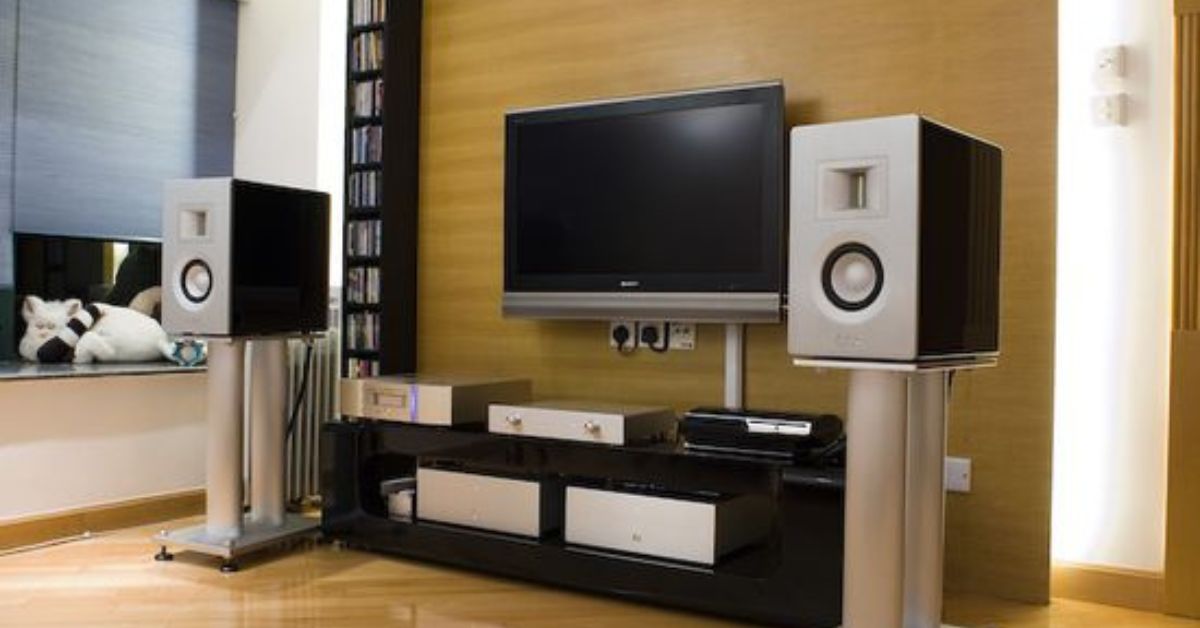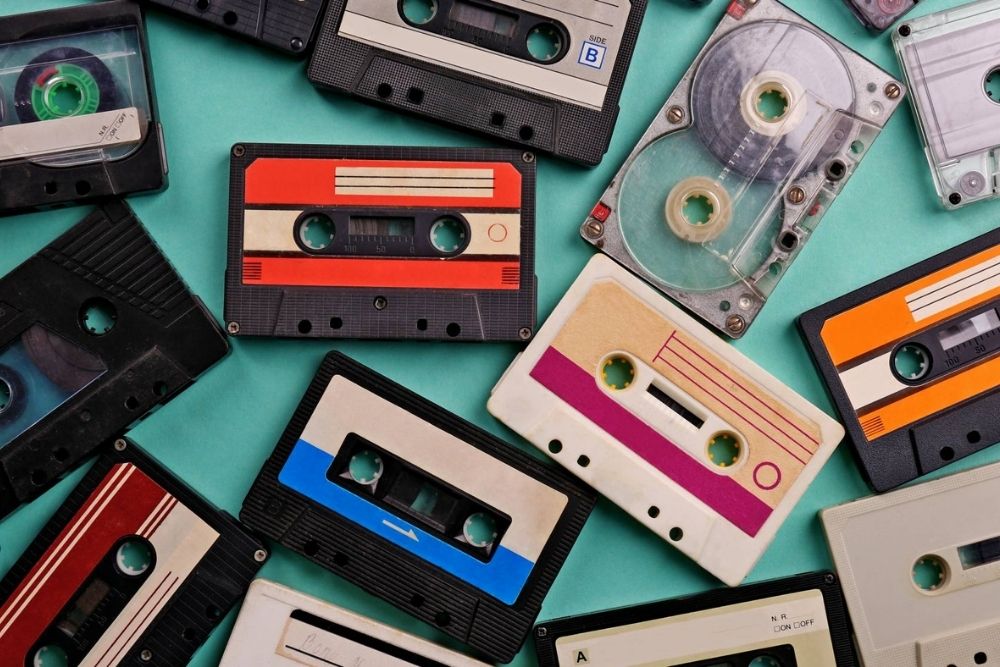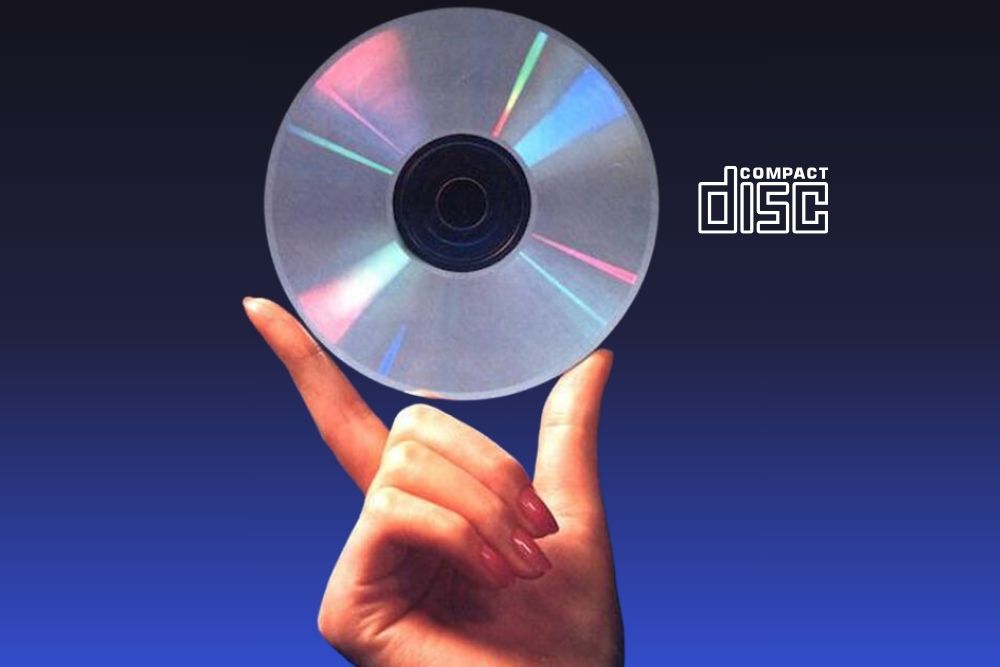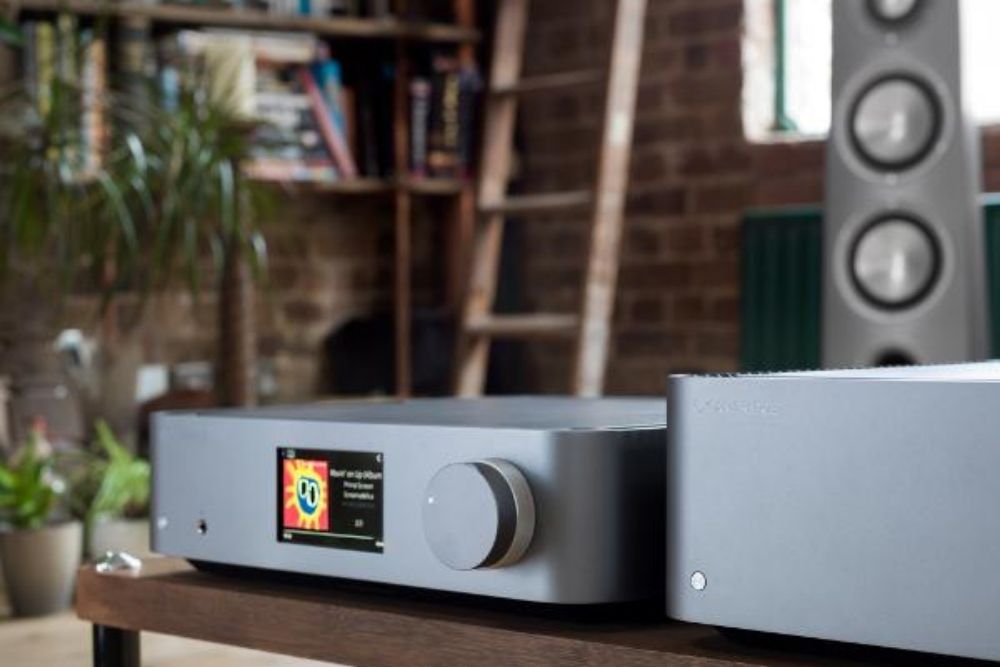
Sound and music are more than just mere noise. Even for the classical connoisseur faced with heavy metal music.
They are the heartbeat of human culture and communication. They can touch our souls and move our imagination; they can tell stories and share knowledge.
Throughout history, humans have invented amazing technologies to capture, preserve, and share sound in various forms and formats.
In this article, we will take you on a brief journey of sound — from the earliest days of recorded music to the modern era — and explore how different platforms of delivery and audio formats have shaped the evolution of hi-fi audio brands and their unique house sounds.
You will discover how each platform and format has its own strengths and weaknesses, and how they have influenced the way we listen to sound today.
Advertisement
High Five to Hi-Fi

We start at the beginning with the dawn of recorded music — marked by the invention of the phonograph. This device used a needle to vibrate a diaphragm, which in turn vibrated a speaker cone to produce sound.
The quality of sound reproduction was contingent on the quality of the needle, diaphragm, and speaker cone.
The phonograph was a groundbreaking invention that allowed people to enjoy music at their leisure, without the need for live performances.
This technology catalysed the birth of the music industry, with record companies beginning to manufacture and distribute phonograph cylinders encompassing various music genres.
Pioneering hi-fi audio brands such as Columbia Records (1888), Victor Talking Machine Company (1901), and Deutsche Gramophon (1898) were established during this period.
These brands vied for market share and customer loyalty by offering diverse types of music, sound quality, and design.
They also developed unique house sounds, influenced by the characteristics of phonograph technology like frequency range, distortion level, and acoustic resonance — each with their own unique take as to how recorded music should sound.
The supremacy of the phonograph was soon contested by radio technology, which revolutionised how people consumed sound.
Radio broadcasting commenced in the 1920s and rapidly became a favoured medium for disseminating news, entertainment, and music to large audiences.
Despite its advantages over phonograph cylinders such as lower cost, broader reach, and greater variety, radio had its limitations like poor sound quality, interference, and lack of control over content.
Consequently, many individuals still preferred owning records and playing them on personal devices.
The 1950s saw the introduction of the stereophonic sound system, which revolutionised the way people listened to music.
Before stereo, all sound recordings were monophonic, meaning that they had only one channel of sound. This meant that all the music was coming from the same speaker, and there was no sense of spatial depth or realism.
Stereo, on the other hand, uses two channels of sound, one for the left speaker and one for the right speaker. This creates a more realistic soundstage, where the music seems to come from different places in the room.
It also allows for a more precise imaging of musical instruments, so you can hear where each instrument is located in the mix.
The introduction of stereophonic sound was a major breakthrough in sound reproduction, and it quickly popularised hi-fi audio systems worldwide, led by the ubiquitous vinyl record or LP (Long Play).
Designed to reproduce recorded music with high fidelity or “faithfulness”, this led to recording engineers mixing music in stereo, allowing them to capture the natural timbre of the instruments and the environment.
This resulted in a more immersive and realistic listening experience.
The Digital Deluge

The 1970s ushered in the era of compact cassette tapes, providing a more portable and affordable means to enjoy music.
Despite their inferior sound quality compared to vinyl records, cassette tapes offered several benefits such as portability, durability, re-writability, and affordability.
They also enabled users to create personalised mixtapes by recording their favourite songs from various artists onto a single cassette and enjoying it while on the go.

The advent of digital audio in the 1980s was marked by the introduction of compact discs (CDs). Early CDs were initially criticised for their “sterile” sound compared to the more warm, luscious sound from vinyl records.
However, advancements in recording, mixing and mastering capabilities eventually turned CDs into the dominant format for recorded music.
The Super Audio CD (SACD), was then developed by Sony and Philips in 1999 as a successor to CDs, offering multiple audio channels along with a higher bit rate and longer playing time than conventional CDs.
SACDs are designed for SACD players but some are hybrid discs containing a CD layer playable on regular CD players.
The dawn of the new millennium saw the introduction of the MP3 format — digital audio files that have been compressed to a fraction of the size of uncompressed audio files, making them ideal for downloading and streaming music.
Enthusiasts could create personalised playlists by downloading songs from various sources. However, the compression process did degrade sound quality.
Streaming In

In the 2010s, streaming services like Spotify and Apple Music emerged, providing users with on-demand access to a vast music library.
This inevitably led to a decline in physical media sales.
Hi-fi streaming services appeared shortly, providing superior audio quality compared to regular streaming by using lossless compression or no compression at all, preserving the original fidelity of the audio files.
Hi-fi streaming services also offer higher sample rates and bit depths than regular streaming services, enhancing the dynamic range and clarity of the sound.
These hi-fi streaming services deliver their offerings through various platforms such as web browsers, desktop applications, mobile applications, smart speakers, and network players.
Some platforms support different audio formats and technologies like FLAC, DSD, Dolby Atmos, and Sony 360 Reality Audio — all aimed at delivering optimal sound quality and spatial audio experience to listeners.
However, compatibility varies across platforms, so users may need to check the specifications and requirements of their devices and services before choosing a hi-fi streaming service.
For more on setting up a streaming service in your home, visit our earlier article on this topic here.
A Brand's Sound Defined

The history of recorded music is deeply intertwined with the evolution of audio equipment and the unique sounds produced by different brands and manufacturers.
As recording technology advanced each brand developed its own “house sound” — a unique sonic signature influenced by their design philosophy, choice of materials, and manufacturing techniques.
This “house sound” is a key differentiator and forms an integral part of a brand’s identity.
For instance, some brands might be known for their warm and rich sound, while others might be celebrated for their detailed and analytical sound reproduction.
Thus, the journey of recorded music and the evolution of audio equipment are two sides of the same coin, each influencing and shaping the other in a continuous dance of technological progress.
However, some general trends and tendencies can be observed among some of the more popular and reputable brands in the hi-fi industry. For example:
- Bowers & Wilkins is a British brand that is known for its high-end speakers and headphones. They are often praised for their detailed, balanced, and natural sound, with a smooth and refined presentation.
- Denon is a Japanese electronics company famous for their high-fidelity audio and video components for the consumer markets. They are known for their vivid, spacious, and detailed sound, with a powerful and dynamic bass.
- KEF is another British brand that is famous for its speakers and headphones. They are acclaimed for their innovative, accurate, and coherent sound, with a spacious and holographic soundstage.
- McIntosh is an American brand that is renowned for its amplifiers and speakers. They are known for their powerful, detailed, and warm sound, with a signature blue glow.
Different brands of hi-fi equipment may have varying sound characteristics.
However, these descriptions are not definitive as there may be variations and exceptions within each brand’s product line.
The best way to determine the sound characteristic of a brand is to listen to it yourself, preferably in a well-equipped and acoustically treated room.
By listening carefully to the brand sounds with audio high-fidelity equipment, you can find the pieces that will give you the best listening experience.
Which House Sounds Right?
You may have heard of the terms British, American, Japanese, and European “house sounds” in the context of high-fidelity equipment.
This generally refer to the different sonic characteristics of audio equipment produced in these regions.
Hi-fi enthusiasts have long extolled the various virtues of these “house sounds” and in essence:
- British audio equipment delivers a smooth, laid-back sound that emphasises the midrange frequencies. This is the result of using high-quality components and paying attention to detail retrieval. Audiophiles love the British house sound for its natural and engaging quality.
- American audio equipment produces a more aggressive, dynamic sound that boosts the bass frequencies. This is the effect of using more powerful amplifiers and speakers. Listeners who like a more visceral listening experience prefer the American house sound.
- Japanese audio equipment achieves a neutral, balanced sound that highlights the clarity and resolution of recorded sound. This is the outcome of using advanced technologies and focusing on precision. Listeners who want the most accurate possible sound reproduction choose the Japanese house sound.
- European audio equipment creates a warm, inviting sound that balances the overall tonal quality. This is the consequence of using traditional techniques and concentrating on musicality. Listeners who want a sound that is both enjoyable and natural, favour the European house sound.
Of course, these are just generalisations, and there is a great deal of variation within each category.
There are many British audio products that have a bright, analytical sound, and there are many American audio products that have a smooth, laid-back sound.
Ultimately, the best way to find out which type of house sound you prefer is to audition different products and see what you like best.
With technological advances, modern hi-fi equipment and listening habits have also had a significant impact on brand house sounds in some of these ways:
- Increased clarity and detail: Listeners can hear more of the nuances in the music, which can lead to a more immersive and engaging listening experience.
- Wider soundstage: The illusion that the music is coming from all around you is created. This can be especially beneficial for genres of music that rely on a lot of spatial cues, such as classical music or jazz.
- More accurate bass response: The music has more impact and depth, which can be especially important for genres of music that rely on a lot of bass, such as electronic music or hip hop.
- Personalisation: Users can customise the sound to their own preferences. This can be done by adjusting the EQ settings, the speaker placement, or even the listening environment. This level of personalisation can help to ensure that listeners get the best possible sound experience.
- Rise of streaming services: Listeners are now more likely to listen to music on their headphones or earbuds at home or while on-the-go.
- Demand for music that sounds good on small speakers: With home space at a premium (especially in Singapore), this has influenced the way that brand house sounds are now produced.
As a result of these factors, brand house sounds have become more detailed, immersive, and engaging. This has led to a more competitive landscape, as brands strive to create sounds that are both distinctive and appealing to their target audience.
The story of recorded music and the journey of audio equipment are two sides of the same coin.
Each audio brand has its own “house sound” that expresses the manufacturer’s vision, values, and craftsmanship.
These sounds have inspired and shaped the musical preferences and tastes of generations of listeners and artists.
The diversity and richness of recorded music is a tribute to the creativity and innovation of both the musicians and the audio engineers who have pushed the boundaries of sound reproduction.






